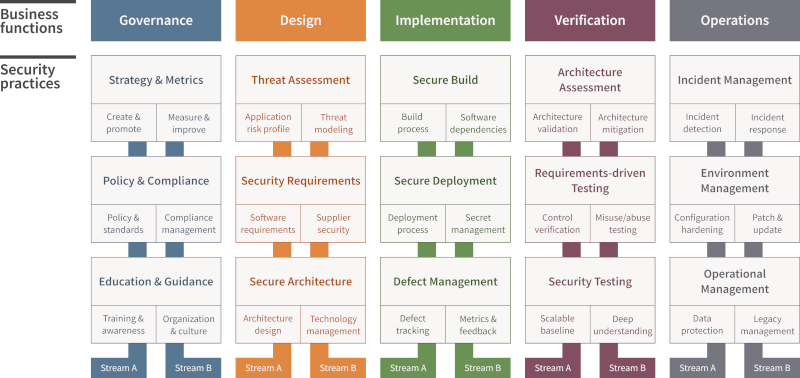
Resilience Joins Security at the Bedrock of Best Practice
From Reactivity to Proactivity: The Evolution of Security and Resilience
In recent days, the eruption of war in the Middle East, coupled with the deliberate sabotage of oil and communication infrastructures in Finland, has starkly illuminated the intricate, dynamic, and international nature of the global business risks confronting us today.
The turbulence of these events, set against the backdrop of a decade punctuated by multifaceted global crises, underscores a compelling truth: organizational resilience must evolve from being a peripheral consideration to being intricately woven into the foundational architecture of business strategy and operations, mirroring the evolution of security from an adjunct to a core, foundational element in safeguarding businesses.
The Necessity of Embedding Resilience in Business DNA
During my decade long sabbatical in cybersecurity I saw the arc of security within the sphere of technology and infrastructural development make a vital transformation.
In the early stages of digital evolution, security was often relegated to a secondary status, superimposed upon existing frameworks, often retroactively, and generally in response to specific threats or incidents. However, as the digital realm burgeoned, intertwining irrevocably with every facet of organizational operations and governance, security morphed from a reactionary mechanism to an intrinsic, foundational element of all technological and infrastructural development.

In essence, security became synonymous with quality and reliability, transcending its original role as a safeguard to become a determinant of operational, ethical, and qualitative robustness. Now, a parallel metamorphosis is essential in the realm of resilience. Digital transformation and resilience must go hand in hand.
Best Practices: Building a Resilient Organizational Framework
As the dynamism and complexity of global operational environments show, ensuring continuous, stable, and secure operations amidst diversified disruptions has become imperative. COOs cannot leave Resilience, in this context, as an overlay strategy, activated in times of crisis; rather, it must be intimately woven into the organizational, operational, and strategic tapestry from inception:
– Proactive Resilience Design: Much like security protocols are now embedded from the initial stages of software development, resilience must be integrated into the fundamental design of operational and strategic frameworks, considering diverse risk variables such as geopolitical instabilities, cyber threats, and socio-economic fluctuations.
– Continuous Resilience Optimization: Adopting an iterative approach towards resilience, wherein strategies, technologies, and protocols are persistently evaluated and optimized in alignment with evolving global and organizational landscapes.
– Distributed Resilience: Facilitating a decentralized resilience model that empowers all organizational tiers and nodes (from central operations to remote workers), infrastructure resilience strategies must use tools, technologies, and procedural frameworks to assure autonomous operational continuity amidst disruptions.
– Inclusive Resilience Development: Engaging multifunctional teams, encompassing diverse organizational functions (from IT and operations to HR and compliance), in the formulation and execution of resilience strategies, ensuring holistic, multifaceted resilience integration.
Resilience as Today’s Business Imperative
Much like security has become an unequivocal standard for technological and infrastructural excellence, COOs, along with their IT and Infrastructure Teams, must evolve resilience to become a non-negotiable, intrinsic criterion for organizational, operational, and strategic integrity.
Through integrating resilience into the foundational architecture of business strategies and operations, and investing in innovative, preventative solutions like Reskube, organizations can navigate through the multifaceted challenges of the modern global landscape, safeguarding their operations, stakeholders and futures against the unpredictable dynamics of the contemporary world.
Spotlight on Reskube: Leading the Charge in Resilience Innovation
In our post-pandemic, permacrisis era, with all of the organisational challenges and where new risks constantly emerge and evolve, the demand for embedded resilience in every facet of operation has never been greater. Amid this backdrop, tech innovations for resilient operations like Reskube are becoming game-changers. They provide a direct and comprehensive strategy to ensure stability and continuity.
- Why buy a router for your critical staff or office when you can buy a fully resilient self-powered router?
- Why buy a UPS to power your router for 20 minutes when you can buy a Reskube that will do the job for 20 hours?
Reskube stands out as an innovative network component designed for this age, embedding resilience at the heart of operations. It guarantees that remote staff and network resources consistently deliver value to the business, even amidst unforeseen disruptions. It puts cybersecurity and business resilience at the foundation of our businesses.
Join our mailing list!

